#DMTBeautySpot #beauty

Gieves & Hawkes has rarely had a distinct house style in recent decades.
Although historically a military and naval outfitter, and making its suits with a similar amount of structure and strength, the cut has varied with cutters.
Kathryn Sargent made me a hopsack jacket when she was head cutter, but is now set up successfully on her own. And more recently, Davide Taub has made me a few pieces – including a pea coat and leather jacket, and most recently the linen suit discussed today.
So perhaps it’s best to think of this as Davide’s style, which is currently the style of Gieves & Hawkes.
It has many of the elements you’d expect from an old Row tailor like Gieves, such as traditional structure and sharp lines, but also some elements that are distinctly Davide.
House: Gieves & Hawkes
Address: 1 Savile Row, London
Site: www.gievesandhawkes.com
Cutter: Davide Taub
Price (at time of writing): £5,300 (incl VAT)
Davide is an all-round creative. He trained as an architect, is still an able artist (he did watercolours of the concepts of our previous commissions) and is constantly thinking about reinventing elements of tailoring.
Few other Savile Row tailors would be able to cut and make a leather jacket, fitting it through multiple toiles, or use the sunburst quilting we had in my pea coat.
In a classic suit, this is far more restrained.
However, he has been using lighter canvases in summer suits such as this one, while retaining a feeling of structure – and the difference compared to standard Row suits is significant.
In analysing the cut, let’s start with the elements that are typical Savile Row.
The lapel, first, has a slight belly on it, rounding outwards as it heads up towards the shoulder.
The foreparts, where the jacket opens below the waist button, are relatively closed and follow a straight line downwards, before turning a tight corner at the bottom.
The jacket is relatively long (32½ inches), with a nice deep vent. And the shoulders follow a clean line, finishing in a slightly raised sleevehead.
Other Savile Row points like the matte horn buttons are also present and correct.
The shoulder is one place the cut starts to diverge though. For while the line is straight, the padding is actually very thin along most of its length.
Compare this shoulder line to my Dege & Skinner tobacco-linen suit, and it’s immediately clear how much less padded the Gieves one is.
However, Davide then keeps some of the sharpness by adding extra padding at the end. This raises the end of it up, just above the sleeve, making the whole line a little less sloped.
The difference is small because the pad is so thin to start with. But overall it creates quite a sharp shoulder, yet the jacket feels very comfortable and light.
Another point that’s less typical Savile Row is the slimness around different points of the suit.
This tendency won’t surprise anyone that’s met Davide, as his suits are often slim. But it is less dramatic on clients, and it’s not until you point out the shape through the back of the jacket, or the tapering of the sleeve, that it becomes obvious.
It’s most evident in the trousers, which are as slim as it’s possible to be on me yet still be comfortable and functional. They have a cuff circumference of 14¾ inches, and 18 inches at the knee.
Other things worth highlighting are the width of the lapel (3¾ inches) which is a little more than many Row tailors cut by default.
And the buttoning point, which is fairly high on the jacket – only 17¾ inches from the shoulder seam. The lowest in this series is 20 inches, and the average around 18½.
As we often point out, that height is even greater as a proportion of the length of the jacket, so it particularly emphasises the bottom half – the skirt.
This is a tendency of quite a few English tailors, who tend to place more importance on the sharpness and flare of the skirt than the Italians do.
I appreciate how it flatters the body, and runs the eye up into the waist – the slimmest part of the body. Nevertheless, having that buttoning point an inch lower is probably the first thing I would change in a second suit with Davide.
In the images here, the suit is worn with a black knitted-silk tie from Anderson & Sheppard and a lilac ikat-print cotton handkerchief from A&S too, which nicely works against the green of the linen.
The bespoke shirt is from Budd and the shoes are the Piccadilly loafer from Edward Green, in black calf.
More pictures of the suit, and different styling, on the original article on this suit here.
Style breakdown
- Shoulder width: 6 inches
- Shoulder padding: Thin, thicker towards shoulder end
- Sleevehead: Slightly raised and wide
- Sleeve: Moderate through
- Cuff: 11 inches
- Lapel: 3¾ inches, slight belly
- Gorge height: 3½ inches
- Drape: Moderate
- Outbreast pocket height: 10 inches
- Buttoning point: High, 17¾ inches
- Waist suppression: Slightly suppressed, below buttoning point
- Quarters: Slightly open, from second button
- Length: 32½ inches
- Back seam: Suppressed
- Vent height: 10 inches
- Trouser width at knee: 18 inches
- Trouser width at cuff: 14¾ inches
Photography: Jamie Ferguson @jkf_man
DMTBeautySpot
via https://www.DMTBeautySpot.com
Simon Crompton, Khareem Sudlow
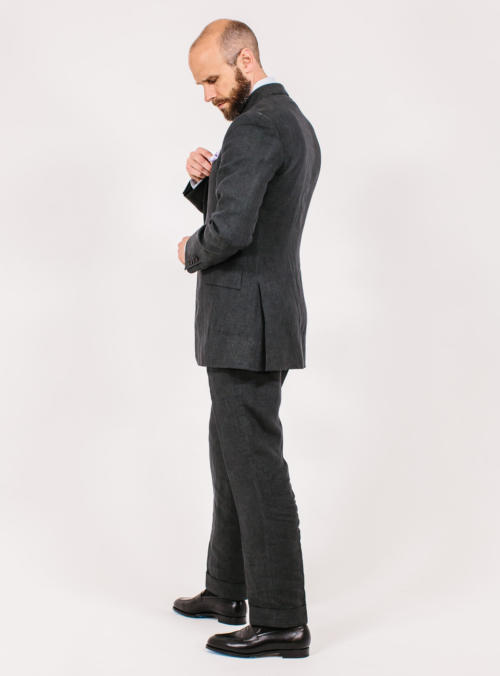
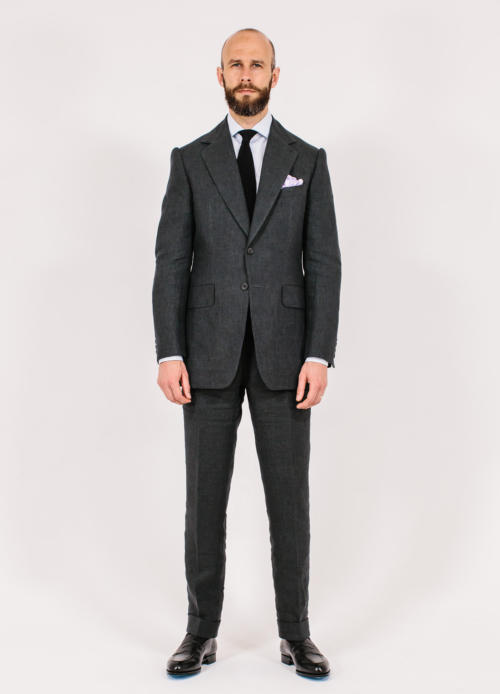
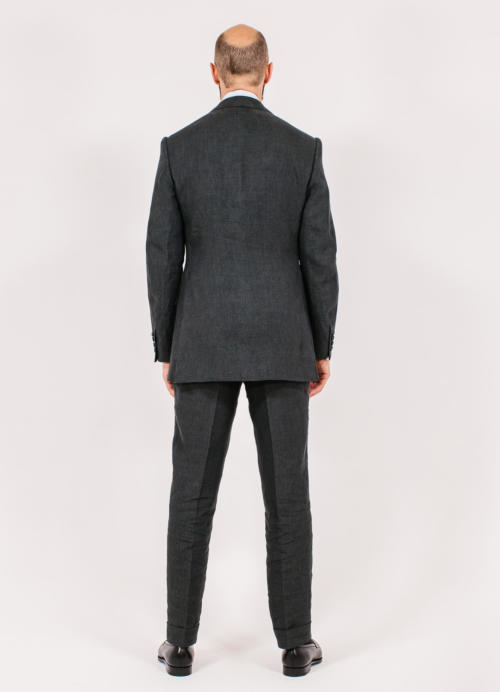
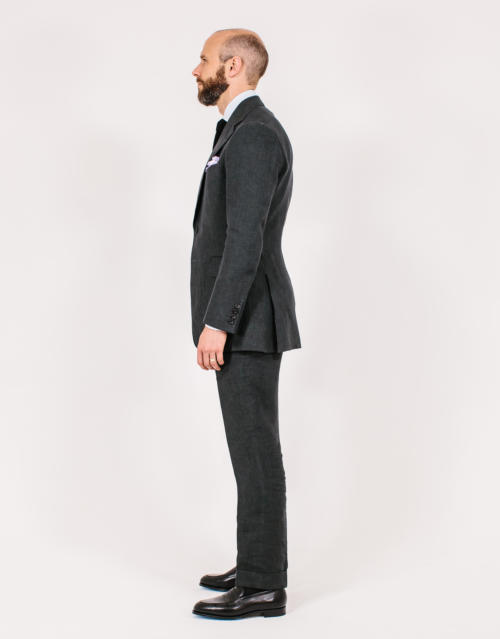
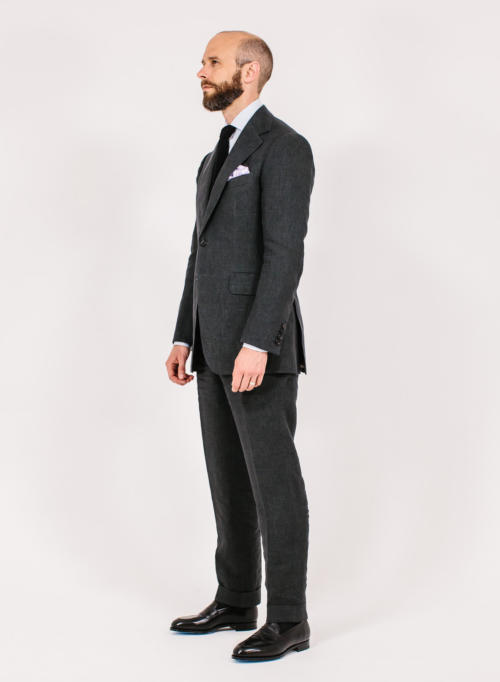
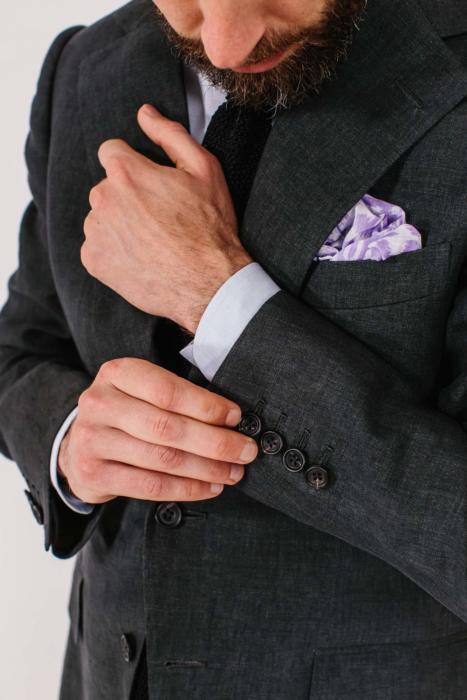
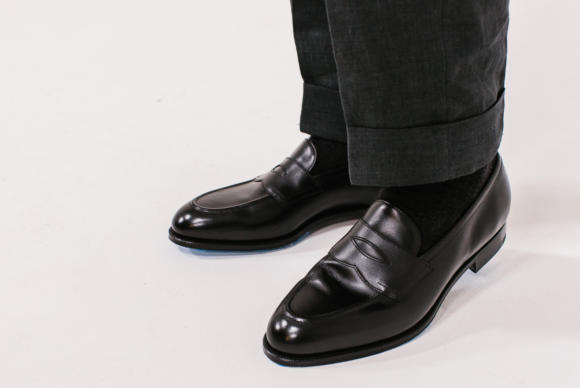
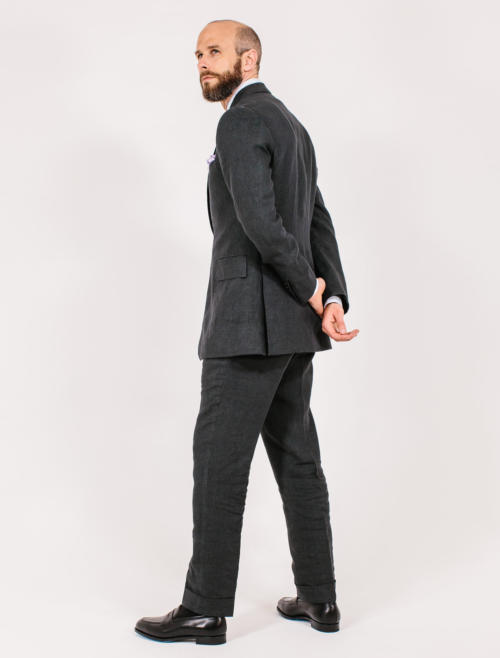

0 comments